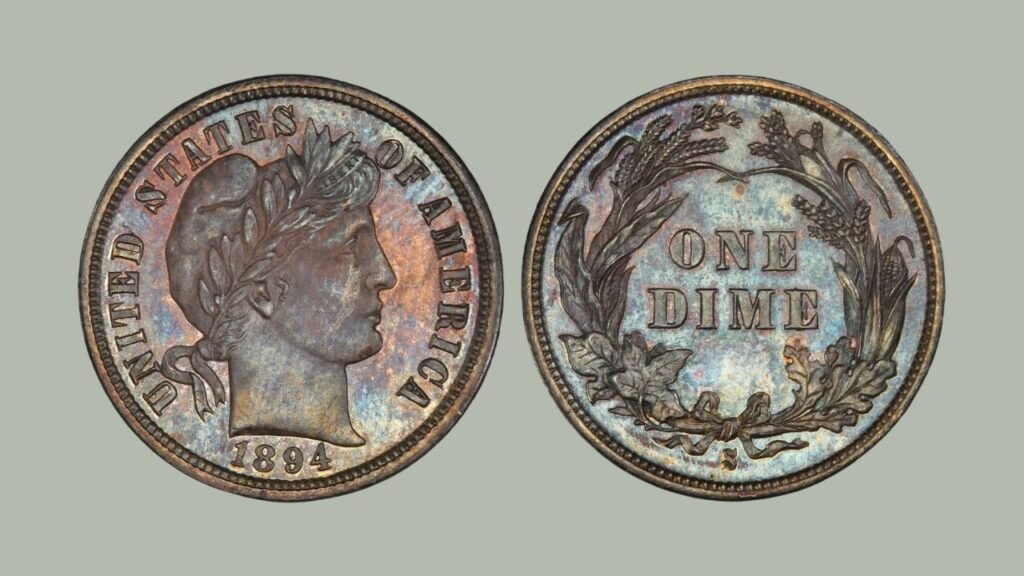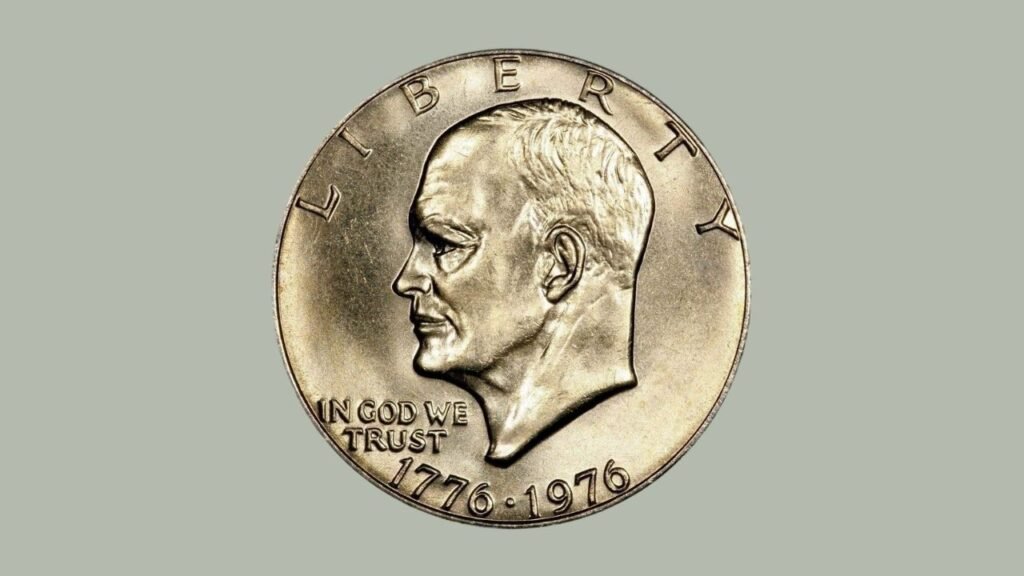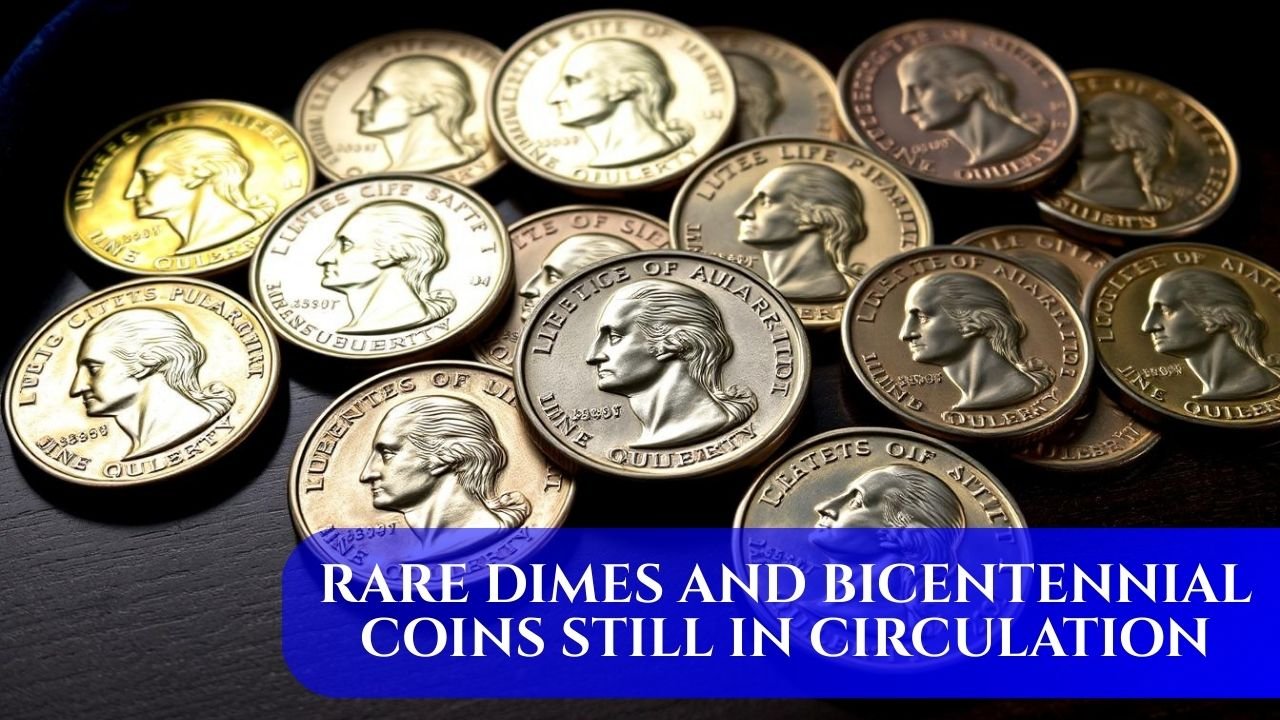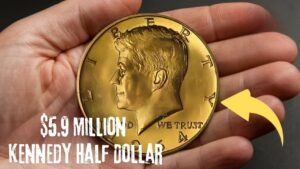The world of coin collecting is filled with hidden treasures, and for lots Americans, the idea that rare coins may also nevertheless be circulating in everyday pocket trade is both captivating and exciting. From precious dimes tucked away in drawers to iconic Bicentennial coins minted during the state’s 200th birthday celebration, certain portions have end up worth small fortunes. Some of these coins are appraised collectively at values exceeding $455 million, in large part because of their rarity, minting mistakes, and ancient significance.
While maximum free alternate might also most effective purchase a cup of coffee, these particular coins highlight how disregarded currency can suddenly benefit almost unattainable worth. Let us discover the information behind the 5 rare dimes and Bicentennial coins that retain to encourage U.S. Creditors and buyers.
The Significance of Rare Coins in U.S. Circulation
Rare coins aren’t simply portions of currency; they characterize moments in history, technical artistry in minting, and in a few cases, national celebration. Collectors and historians alike view those coins as artifacts that represent the subculture and timeline of the United States.
Dimes, mainly, have a charming history in American coinage as they have been minted for over two centuries. Meanwhile, the Bicentennial coins minted in 1976—hold patriotic value, marking 200 years of American independence. Although minted in large numbers, specific variations with minting mistakes or special compositions are highly rare, rising their value to alarming heights.
5 Rare Dimes and Bicentennial Coins Worth Millions
Below is an in depth exploration of 5 rare coins that together body the story of the $455 million thriller in circulate.
1894-S Barber Dime: The $2 Million Rarity
One of the most famous rare coins in American records is the 1894-S Barber Dime. Minted in San Francisco, there were best 24 ever produced, making this coin one of the rarest in the entire U.S. Coinage gadget. Of the ones 24, it is believed that simplest 9 are accounted for todays.
- Estimated Current Value: Between $1.5 million to $2 million in keeping with piece.
- Rarity Reason: Only 24 originally produced, with single portions surfacing in high-grade situations.
- Collector Appeal: Historical status and ultra-low mintage numbers make this coin impossible to resist to numismatists.

1916-D Mercury Dime: The First Striking of an Icon
The 1916-D Mercury Dime is any other gem particularly prized in coin gathering. The “D” mint mark indicates that it changed into struck in Denver, and simplest 264,000 had been minted—one of the lowest numbers for the Mercury collection.
- Estimated Current Value: Worth $200,000 to $1 million, relying on grade and circumstance.
- Rarity Reason: A first-year launch paired with a strikingly low mintage.
- Significance: The Mercury Dime layout have become one of the maximum iconic American coins of the early twentieth century.
1975 No-S Roosevelt Dime: Minting Error Brings Fortune
The 1975 No-S Roosevelt Dime owes its value completely to a minting mistakes. Coins produced on the San Francisco mint generally deliver the “S” mark, however a few had been released with none mark, making them incredibly valuable.
- Estimated Current Value: Between $350,000 and $500,000.
- Rarity Reason: Accidental loss of mint marking at the San Francisco mint.
- Collector Interest: Appeals to mistakes-coin creditors as one-of-a-kind oversights by means of the U.S. Mint.
1976 Bicentennial Quarter: The Double Die Error
The Bicentennial Quarter, issued in 1976, remains popular now not just as a patriotic token however in rare times where error variations exist. The double die blunders—because of misalignment all through minting—produced rare doubling inside the inscriptions or layout.
- Estimated Current Value: Up to $15,000 to $30,000 for excessive-grade double-die error coins.
- Rarity Reason: Error-based rarity, restricted examples in flow.
- Significance: A physical commemoration of America’s 200 years of independence.
1976 Bicentennial $1 Eisenhower Dollar: Silver Composition Variant
Among Bicentennial problems, the Eisenhower Dollar minted in 1976 sticks out. While most were produced in a fashionable copper-nickel alloy, restricted numbers had been struck in 40% silver for collector’s units. These silver Bicentennial bucks observed their manner into movement and now command high values.
- Estimated Current Value: $10,000 to $30,000, depending on purity and situation.
- Rarity Reason: Silver-composition stream coins from collector sets are not often seen in lively change today.
- Collector Attraction: Combination of patriotic layout and treasured metallic content material.

Why Rare Coins Gain Such Astronomical Value
The high valuation of these coins is pushed with the aid of three principal elements:
- Rarity – Coins minted in limited numbers, or those with errors, naturally escalate in value over the years.
- Condition – Coins graded at higher scales along with “MS-65” or better can multiply in really worth as compared to the same coin in worn circumstance.
- Historical Value – Moments like the American Bicentennial or important layout transitions ensure that creditors eagerly pay top class values for related coinage.
The Role of Coin Grading in Determining Value
The Professional Coin Grading Service (PCGS) and the Numismatic Guaranty Corporation (NGC) use a standardized grading scale starting from “Poor” (P-1) to “Mint State” (MS-70). A small shift in grade can suggest the distinction between thousands and millions in resale value. For example, an 1894-S Barber Dime graded MS-66 would a ways exceed the $1.5 million benchmark compared to 1 in lower circulated grades.
Conclusion
Rare dimes (like the 1894-S and 1916-D) and certain Bicentennial-era error or proof pieces are genuinely collectible and, in exceptional cases, can command very large sums at auction. But sweeping headlines that declare “$455 million in pocket change” are almost always hype: they rely on optimistic aggregation and unlikely assumptions about condition, provenance, and future sales. If you love coins, the real joy is the hunt, the history, and the occasional legitimate discovery — and when you do think you’ve found something special, the best course is careful handling and professional authentication rather than instant headlines.
FAQ’s
Why are Bicentennial coins usually not unusual however some so valuable?
Most Bicentennial coins have been heavily minted and are common. Only errors coins or silver-version issues keep considerable collector value.
Do error coins always have higher value than regular coins?
Yes, however best if the mistake is identified, rare, and authenticated. Mass-produced mistaken coins often bring little additional cost.
How do I realize if my coin is treasured?
Examine mint marks, year, and circumstance. Professional grading services like PCGS or NGC can give a licensed valuation.

